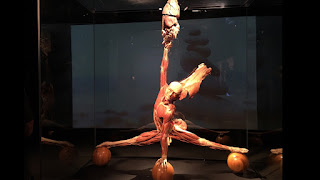Event Blog #3
Event Blog #3
For my final event, I went to the J. Paul Getty Museum. I have been here a few times in the past, and each time I make the visit I’m amazed. The museum itself is a work of art, with beautiful white stone making up all the buildings and impeccably manicured landscaping. There are several water features and an amazing view of LA as well. It’s a great spot for a picnic.
 |
| Stained Glass |
As I said, the museum itself is a work of art, and the experience really begins before you even enter the building complex — it starts with a tram. After parking, you’re loaded into a tram that acts as transport to the museum. But it’s much more than that. The tram provides a great view of Los Angeles and helps to build anticipation for your visit. It also acts as a wonderful example of how architecture can merge the two worlds of art and science.
 |
| King Louis XIV |
Once inside, I went to the exhibition featuring European art. While examining the intricate stained glass displays it occurred to me that these could actually be construed as one of the earliest forms of VR technology. If we define virtual reality “as a means of creating the illusion that we are present somewhere we are not,” then it doesn’t seem so far-fetched (Virtual Reality Society). The glass is painted with different to impersonate different textures, and the many colors of glass interact with each other to show depth. Combined with the light streaming through, a pretty effective 3D effect is achieved and our senses are engaged. Another way the Europeans did this was by creating huge works of art. The painting of King Louis XVI and several tapestries in the museum are over ten feet tall so that your entire field of vision is filled and it feels as though you have entered the work of art.
 |
| Mummy of Herakleides |
 |
| Artistic Map |
The best connection between what I saw at the Getty and our course was the Mummy of Herakleides. This Romano-Egyptian mummy was created between AD 120-140, and displays “crowned falcons, an ibis wearing a sun disk, and a winged female figure who may be the sky goddess Nut” (The J. Paul Getty Museum). What was so cool about this mummy, though, was that computed tomography (CT) scanning was used on it to determine the state of the body within. This is a clear example of technology and art and medicine being used in tandem. Even the process of mummification merges science and art.
Overall, I would highly recommend a trip to the Getty.
 |
| Me at Getty |
Works Cited
Pastels in Pieces. J. Paul Getty Museum, Los Angeles, www.getty.edu/art/exhibitions/pastel_pieces/.
Vesna, Victoria. “Http://www.youtube.com/v/Ep0M2bOM9Tk.” Lecture. Medicine
pt1 . Youtube, 21 Apr. 2012. Web. 25 Oct. 2012. <http://www.youtube.com/watch?v=Ep0M2bOM9Tk>.
Vesna, Victoria. “Http://www.youtube.com/v/FIX-9mXd3Y4.” Lecture. Medicine
pt3. Youtube, 22 Apr. 2012. Web. 25 Oct. 2012. <http://www.youtube.com/watch?v=FIX-9mXd3Y4>.
“What Is Virtual Reality?” Virtual Reality Society, www.vrs.org.uk/virtual-reality/what-is-virtual-reality.html.



Comments
Post a Comment